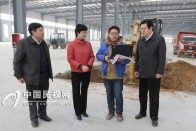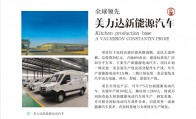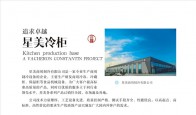全球暖通空调四大潜力应用市场
该研究报告题目为“全球暖通空调行业市场2016-2020”,提供了对市场销售和新兴市场的发展趋势的深入分析,以及对各个细分市场的预测。
该报告将全球暖通空调行业市场的终端用户划分为以下几类:
制造业,食品与饮料生产,制药和生物科技,其他。
制造业
Technavio预测全球暖通空调市场规模到2020年将达到79.2亿美元,年复合增长率达4%。化工,石化,汽车,航空航天,半导体,纺织,造纸,金属加工,木材加工,以及塑料和橡胶的制造商被认为是制造业领域重要的终端用户。其中,未来五年内暖通空调市场需求最高的预计会来自汽车,造纸,航空以及纺织四大行业。
“汽车行业是暖通空调行业最重要的终端用户。在2015年,全球汽车销售8886万辆。跨国汽车制造商,例如福特,大众,宝马,丰田汽车,本田汽车,戴姆勒,菲亚特和塔塔汽车等在印度,泰国和墨西哥等发展中国家大规模投资生产设施。因此,汽车销售的不断增长,需求的不断扩大,以及汽车行业投资的增加更加刺激产能扩张,为暖通空调市场未来四年创造了重要的需求来源。” Technavio首席分析师 Anju Ajaykumar表示。
食品和饮料生产
食品和饮料行业需要大量使用洁净空调和高效的制冷设备来保障高度易腐产品的最佳处理。空气质量也对食品饮料的质量和防腐有直接的影响。对暖通空调来说最主要的需求来自肉类加工厂先进高效的空气处理机组。用于肉类加工厂的暖通系统要确保切割包装在零度以下,并且也需要对空气进行消毒清洁,增强加工厂的生产率和产品的安全。
HVAC主要用于食品包装行业的空气污染的防治。食品包装行业生产小吃,糖果,肉类海鲜以及水果,干酪,蔬菜和调味品等产品需要各类材料,如塑料,玻璃,纸板以及铝罐头等。该行业的增长对暖通空调行业有直接的影响,促进行业针对食品包装等特殊需求进行系统升级,带来更节能高效的产品。
制药和生物技术
制药和生物科技行业需要绝对清洁的生产环境,以确保安全。“这个行业使用清洁室和受控制的环境来制造药品,以防止两种不同的产品之间微生物交叉污染,保证产品质量。暖通空调系统可以为制药和生物科技行业的生产提供高效的环境控制。” Ajaykumar表示。
暖通空调系统在制药和生物科技行业的各个环节和领域都是必备品:制造工厂,化妆品厂或无菌室,再生医学实验室,细胞制备室,检测室等。
其他
其余领域包括的行业如电力(尤其是核电),采矿业,家禽业和水泥厂等。
原文参考:
Manufacturing to Dominate the Industrial HVAC Market Through 2020
Report categorizes the market into four end-user segments
May 23, 2016
KEYWORDS HVAC market / industrial HVAC / industrial HVAC systems
Reprints
No Comments LONDON — The global industrial HVAC market is forecast to grow at a compound annual growth rate (CAGR) of more than 4 percent during the forecast period of 2016 to 2020, according to the latest market study released by Technavio, with the manufacturing industry leading the market.
The research report, titled “Global Industrial HVAC Market 2016-2020,” provides an in-depth analysis of the market in terms of revenue and emerging market trends, including forecasts for various market segments.
The report categorizes the global industrial HVAC market into the following end-user segments:
• Manufacturing
• Food and beverage
• Pharmaceutical and biotechnology
• Others
MANUFACTURING
Technavio predicts the global industrial HVAC market for the manufacturing industry to grow at a CAGR of approximately 4 percent to reach $7.92 billion by 2020. Chemical, petrochemical, automotive, aerospace, semiconductor, textile, pulp and paper, metal processing, wood processing, and plastic and rubber manufacturers are the end-users considered part of the manufacturing industry segment. Of these, the highest demand for industrial HVAC systems is expected to come from automotive, pulp and paper, aviation, and textile over the next four years.
“The automotive industry is the primary end-user of industrial HVAC. In 2015, the global passenger car sales accounted for 88.86 million units. MNC [multinational corporation] automobile manufacturers such as Ford, Volkswagen, BMW, Toyota Motors, Honda Motors, Daimler, Fiat, and Tata Motors are making substantial investments in production facilities in developing countries such as India, Thailand, and Mexico. Thus, rising sales, greater demand for automobiles, and increased investment in the automotive industry will spur the need for capacity expansion, creating demand for HVAC systems over the next four years,” said Anju Ajaykumar, a lead analyst at Technavio.
FOOD AND BEVERAGE
The food and beverage industry requires extensive use of hygienic HVAC and effective cooling to ensure optimal processing of highly perishable products. Air quality also has a direct impact on the quality and durability of food and beverages. The majority of the demand for HVAC is expected to arise from meat processing plants equipped with advanced and energy-efficient air treatment units. The HVAC systems used in meat processing allow packaging of colds cuts almost at 0°C, and they also disinfect the air, enhancing plant productivity and product durability.
HVAC systems are primarily used to prevent air contamination in the food packaging industry. The packaged food industry uses a variety of materials such as plastic, glass, paperboard, and aluminum canning for products such as snack items, confectioneries, meat and seafood, fruits, cheese, vegetables, and condiments. The growth of this industry has a direct impact on the HVAC market in the food packaging industry. Therefore, the major demand for industrial HVAC is expected to arise due to growing demand for packaged foods and upgrading of HVAC systems to more energy-efficient systems.
PHARMACEUTICAL AND BIOTECHNOLOGY
The pharmaceutical and biotechnology industry requires a hygienic manufacturing environment to ensure safety. “The industry uses cleanrooms or controlled environments to manufacture medicines to prevent cross contamination between two different products or infection from microbial entry and to ensure improvement of product quality. HVAC systems provide a controlled environment for pharmaceutical and biotechnology manufacturing,” said Ajaykumar.
HVAC systems are used in various applications in the pharmaceutical and biotechnology industry including: manufacturing plants; cosmetics plants or sterile rooms; regenerative medicine also known as cell preparation rooms; cell preparation and culture rooms; and monitoring rooms.
OTHERS
The others segment comprises industries such as power (especially nuclear power plants), mining, poultry, and cement.











